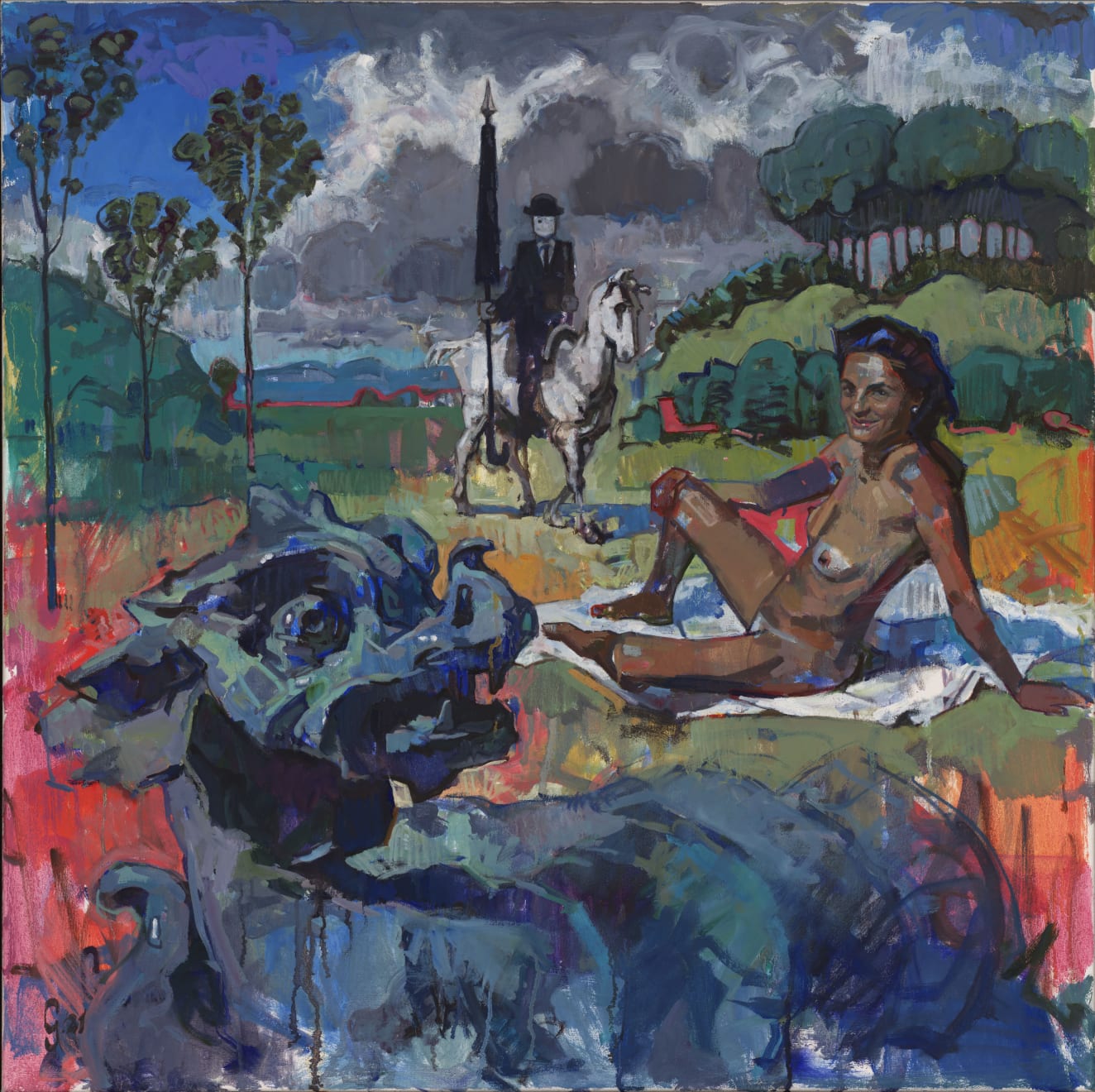-
Artworks
Andrew Gow British, b. 1978
Oh no! It's George!Fine Art Giclée Print on Hahnemuhle Photo Rag Archival Paper60 x 60 cmLimited Edition of 25 plus 3 AP£300"Oh no! It's George!" reimagines St George and the Dragon tale, this time from the dragon's perspective. Distancing from traditional narratives of valiant heroes overcoming evil, this tale paints St George as a modern corporate man driven by greed. At the same time, the maiden is a manipulator, not a damsel in distress. The characters pull from various inspirations: a non-threatening dragon from a Tuscan sculpture, a maiden based on a tumultuous acquaintance, and a St George that combines traits of Don Quixote, Magritte's “Man with a Bowler Hat, and Alex from "A Clockwork Orange". The backdrop is influenced by Raphael and Cortona's landscapes. The story underscores modern humanity as agents of chaos, juxtaposing our hubristic achievements with nature's threatened state. The Fauvist-inspired art style contrasts with our technological era and offers the artist a release from conventional portraiture.This piece provides a fresh perspective on the iconic tale of St George and the Dragon, drawing inspiration from even older tales like that of Perseus and Andromeda or Gilgamesh. These stories traditionally depict the valiant hero overcoming evil, symbolising humanity's battle against chaos and nature.
However, the story unfolds from the dragon's perspective in this rendition. The creature is bewildered, fearing an impending confrontation. The modern-day St George character is depicted not as a paragon of Christian virtue but as a corporate man driven by greed. The maiden, contrary to being an innocent damsel, is portrayed as a manipulator.
The characters have been thoughtfully derived. The dragon, evoking more pity than fear, is inspired by a sculpture in Tuscany. The maiden's character is based on a tumultuous personal acquaintance. In contrast, the St George character combines traits from Daumier's Don Quixote, Magritte's iconic "Man with a bowler hat", and Alex from "A Clockwork Orange", representing a blend of naive knight, faceless businessman, and rogue youth. The setting borrows from Raphael's paintings and the landscapes of Cortona.
The underlying message is that modern man, rather than embodying bravery and virtue, represents selfishness and destruction. In this narrative, humanity is the real agent of chaos, endangering nature and itself. Despite our achievements, our hubris places us and our environment at risk.
Much like "The Bullheaded Thinker", the art style is significant. It's influenced by the Fauvist movement, once derided as "wild beasts". With its unrestrained expression, this style contrasts sharply with our technologically advanced society and provides the artist with a refreshing release from more stringent portrait work.
4of 4
Join our mailing list
* denotes required fields
We will process the personal data you have supplied to communicate with you in accordance with our Privacy Policy. You can unsubscribe or change your preferences at any time by clicking the link in our emails.


